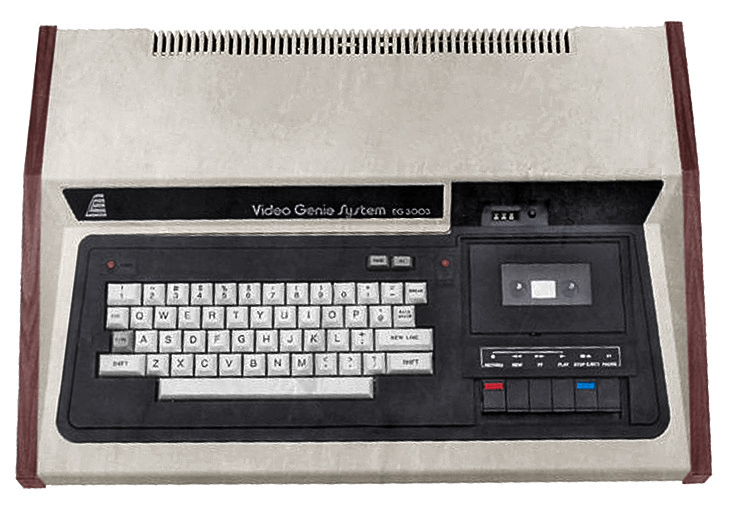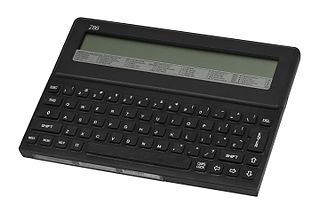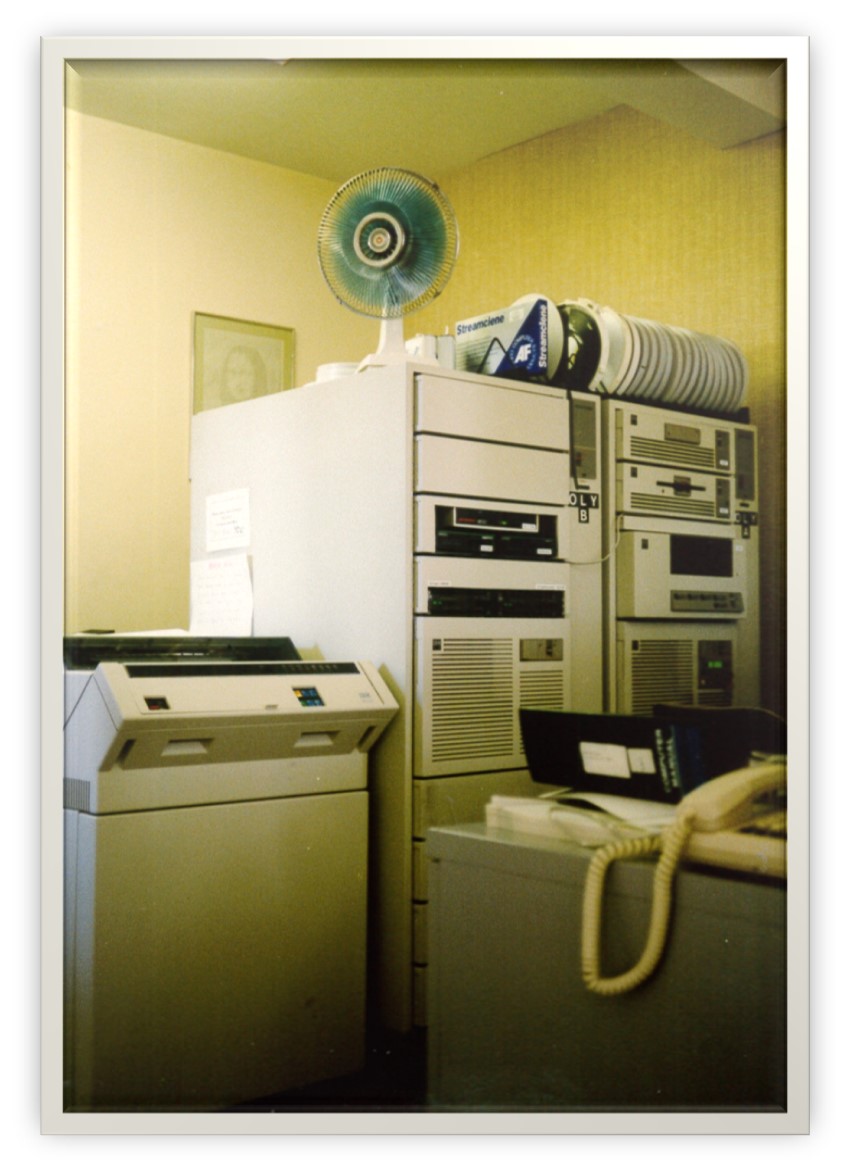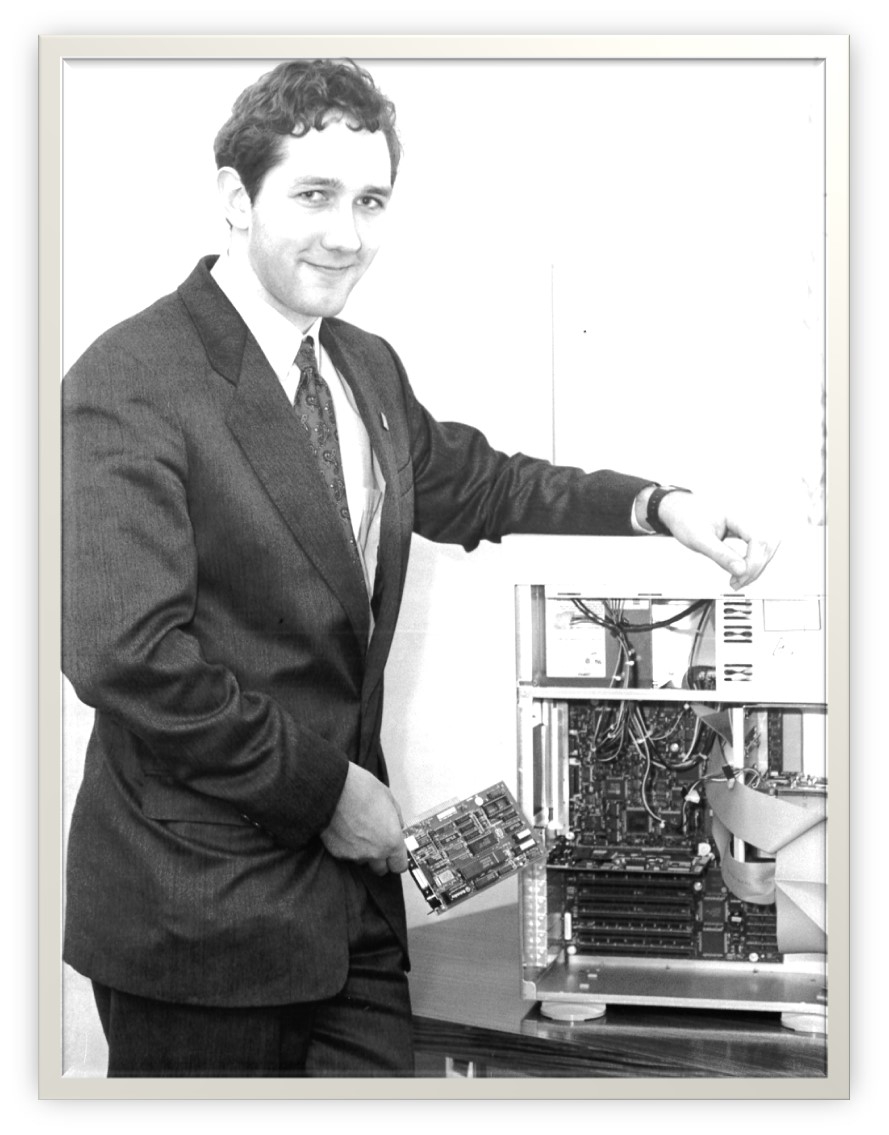30 years – part 1
This month I am celebrating 30 years in Jersey’s IT industry. I thought it would be fun to look back on my journey. This is part one, covering the 1980s and 90s.
The 1980s
 In ’81 I was in the first year group at Victoria College to have computing lessons, 45 minutes every other week, where we learnt to program in BASIC on Video Genies. Programs we wrote could be saved to and loaded from cassette tapes. Soon the school bought a BBC Micro and eventually replaced all the Video Genies with these. The BBC Micros could save data on 5¼” floppy disks. The maths room which was equipped with these computers and a Research Machines 380Z was open at lunchtimes and after school to members of the school’s Computer Club. I became an active member and went on to serve as treasurer and then chairman of the club.
In ’81 I was in the first year group at Victoria College to have computing lessons, 45 minutes every other week, where we learnt to program in BASIC on Video Genies. Programs we wrote could be saved to and loaded from cassette tapes. Soon the school bought a BBC Micro and eventually replaced all the Video Genies with these. The BBC Micros could save data on 5¼” floppy disks. The maths room which was equipped with these computers and a Research Machines 380Z was open at lunchtimes and after school to members of the school’s Computer Club. I became an active member and went on to serve as treasurer and then chairman of the club.
 One birthday I was given a Sinclair ZX Spectrum (16k version) and was far more interested in programming it than playing games.
One birthday I was given a Sinclair ZX Spectrum (16k version) and was far more interested in programming it than playing games.
As a teenager, I was a member of the Jersey Computer Association. The JCA organised annual computer exhibitions and monthly meetings which were often site visits to see the computers installed in different Jersey businesses. This was a great opportunity to gain an understanding of the commercial uses of IT.
In ’86 I spent three weeks’ work experience at what was then called the States of Jersey Computer Services Department. I was introduced to DataEase and migrated the Treasury’s budget monitoring system from the VMS version of Lotus 1-2-3 on a VAX to the PC version. It was then that my fascination with public sector IT began.
 I went on to use DataEase to build a video hire system for the convenience store that I worked part-time at (my first software sale) with the system running on an Amstrad PPC 512. This also became my A-Level computing project.
I went on to use DataEase to build a video hire system for the convenience store that I worked part-time at (my first software sale) with the system running on an Amstrad PPC 512. This also became my A-Level computing project.
 In 1987 the school started replacing the BBC micros with a network of Acorn Archimedes in a dedicated computing classroom. I was much more interested in the teacher’s own Compaq Portable, an IBM-compatible computer which he used to develop Payline, a payroll system tailored for Jersey businesses. This was written in dBase and compiled with Clipper. The teacher taught us to use these products.
In 1987 the school started replacing the BBC micros with a network of Acorn Archimedes in a dedicated computing classroom. I was much more interested in the teacher’s own Compaq Portable, an IBM-compatible computer which he used to develop Payline, a payroll system tailored for Jersey businesses. This was written in dBase and compiled with Clipper. The teacher taught us to use these products.
Prior to the World Wide Web, people used modems to connect to online services like Compuserve. I was a regular user, and my first Internet email address was 100116.1636@compuserve.com. People also used their modems to connect to bulletin boards – a place to exchange messages or chat with other users, share files and play games. I helped a schoolfriend Paul Crick to set up and run a bulletin board called JBBS using a loaned Amstrad and then Compaq Deskpro 286 at the back of Tandy Spectrum (later called Spectrum Computer Centre) in Peter Street, St. Helier. The system was connected to several modems and phone lines, enabling several users to be logged on to it at any one time. JBBS evolved to connect to other, UK based, bulletin board systems. Dialling out to UK servers incurred expensive phone bills, so a subscription scheme was introduced to help fund it. The income was kept in a sweet jar in the office. Unfortunately, when it was nearly full the jar of money was stolen. The thief was never identified, and it led to JBBS having to close down.
 During my A levels I wrote my essays on a Cambridge Computer Z88.
During my A levels I wrote my essays on a Cambridge Computer Z88.
 My IT career started in July 1989. I joined Thomas and Company Limited as a trainee developer, learning RPG, a programming language for the IBM System/36 and AS/400. Training consisted of audio learning using ‘ATS tapes‘ – listening to a boring American voice on a set of audio cassettes and following exercises. The software product I was working on was called CUTAS (Computerised Unit Trust Administration System). This was early fintech development, exporting software from Jersey to offshore financial services centres and to big players in London. While some of the enhancements I was working on were small, the biggest was to enable the system to support European monetary union. This was a big team effort to tight deadlines and an interesting insight into the full software development lifecycle with formal testing.
My IT career started in July 1989. I joined Thomas and Company Limited as a trainee developer, learning RPG, a programming language for the IBM System/36 and AS/400. Training consisted of audio learning using ‘ATS tapes‘ – listening to a boring American voice on a set of audio cassettes and following exercises. The software product I was working on was called CUTAS (Computerised Unit Trust Administration System). This was early fintech development, exporting software from Jersey to offshore financial services centres and to big players in London. While some of the enhancements I was working on were small, the biggest was to enable the system to support European monetary union. This was a big team effort to tight deadlines and an interesting insight into the full software development lifecycle with formal testing.
The 1990s
TCL was a Jersey company but soon after I joined it was bought by the Hoskyns Group, which in turn was bought by Cap Gemini, so I’d gone from working for a small company headquartered locally to a PLC.
While at TCL I found myself as the company expert in IBM personal computers having worked with them while at school. TCL had a PC product called MANSYS (Marketing Analysis System) which was written in dBase and compiled with Clipper, the same software that I had learnt in the sixth form at school. MANSYS was what we’d today describe as a CRM system. I became the product manager, enhancing the functionality and marketing it to new clients.
TCL had offices in Jersey, Guernsey, the Isle of Man, Southampton, London and Luxembourg. The UK and Luxembourg offices would soon close but I did get to travel to Lux to install MANSYS for a client there.
One morning we were all called into the reception area for an announcement. Cap Gemini had sold TCL to Ray Curtis, a pioneer in the early Jersey IT industry, and we would be merging with the IT services company EDP to form the largest IT company in the Channel Islands, Itex.
The culture of TCL aligned to the company’s clients – shirt and tie, sharp suit. EDP, on the other hand, specialised in bureau services: things like microfilm and microfiche (with their inherent chemicals), hardware engineering, and electronic data processing. The merger was a good one though – there were few overlaps, and where they did exist, for example in software development, this resulted in a much-enlarged team. Itex would grow from about 70 staff to over 160 in the coming years and was mostly a great company to work for.
The gradual move from minicomputers like the AS/400 towards PCs worked well for me. Software development platforms played to my strengths – the parish rates, electoral roll, firearms and St Helier parking fines systems all ran on DataEase, for example. We took over support and onward development of the Payline payroll system that had been developed by my A-level computing teacher.
The move away from microfilm was towards ‘electronic filing’ in document management systems and microfiche migrated to COLD (computer output to laser disc) systems. These things became my speciality. As product manager for EDM and COLD, I attended conferences, managed third-party suppliers, obtained certifications and carried out pre-sales consultancy on systems from companies like Kofax and Eastman Software. This naturally led to working on workflow management systems from companies like Watermark and Filenet.
 One of the companies that I demoed MANSYS to was Lloyds bank. It was exactly what they needed – but it had to work for dozens of staff. It needed to be networked. Not only did Lloyds not have a PC local area network, they didn’t have PCs! So Itex sold them a bulk order of PCs, and it fell to me to install them and set up a Novell Netware 3 network. I needed to get qualified as a network engineer, so I flew back and forth to a training centre in Wokingham to take courses and sit exams to become a Novell Certified Network Engineer.
One of the companies that I demoed MANSYS to was Lloyds bank. It was exactly what they needed – but it had to work for dozens of staff. It needed to be networked. Not only did Lloyds not have a PC local area network, they didn’t have PCs! So Itex sold them a bulk order of PCs, and it fell to me to install them and set up a Novell Netware 3 network. I needed to get qualified as a network engineer, so I flew back and forth to a training centre in Wokingham to take courses and sit exams to become a Novell Certified Network Engineer.
Lloyds would go on to become one of Itex’s largest clients. I made visits to the Isle of Man to install MANSYS on a new PC network in their offices there, supplied and supported by local company Skanco.
Later, I helped Lloyds move from MS-DOS based PCs running software like WordPerfect to Microsoft Windows 3.11 and the Microsoft Office 3.0 suite. They came with a choice of fonts!!
As the world of business made a firm move to PCs, Itex was increasingly dependent on another Jersey company, Chris Evans’ Omicron, for the sale, support and networking of Windows PCs. It was a natural move that the companies would merge. As I’d been the Itex expert on PCs up until then, I worked very closely with the ex-Omicron team from then on, joining their systems engineering team. While in this role I worked with others to implement a wide area network between Lloyds branches in Jersey, Guernsey and Isle of Man, at the same time migrating from NetWare to Windows NT Server 3.51.
The widespread adoption of Windows in the mid-1990s meant a change in how we developed software. Clipper, as a DOS-based product, gave way to Microsoft Access and Visual Basic 3.0. The databases we had built and were supporting for the parishes were replaced with Microsoft Access versions.
In 1994 another big project that I was involved in for Lloyds was to take over the development of a new wealth management system. A UK supplier had taken the project so far but it had gone off the rails. Itex stepped in to complete it. This was a client-server application using Visual Basic 5 as the front-end and Microsoft SQL Server on the back-end. Now a Senior Developer, I was based onsite at Lloyds for about 18 months. The project was canned when Lloyds announced their merger with TSB in 1995.
The World Wide Web was becoming important to business in the latter half of the 1990s. In 1996 I forged our way into web development. I was already proficient in HTML, and went on to learn Active Server Pages. In 1997 I developed the first Itex website, www.itexjsy.com. This evolved to integrate Microsoft Site Server, providing features like registration and login and a search engine.
I was part of an innovation team at Itex – based on the ‘First Tuesday‘ model – that obtained a licence to act as a communications provider and partnered with PSINet to offer leased line connectivity. My role was to market web development and other Internet-enabled software integration.
My career took a big step forward in May 1998 when I was entrusted with the management of the Itex software development team. Under my leadership the team grew to 16 staff with an annual turnover of £1 million.
In December 1999 we won our first major web development project, the www.jerseylegalinfo.je website, built using ASP 3.0 and SQL Server.
What happened next? Read part 2.
Leave a Reply